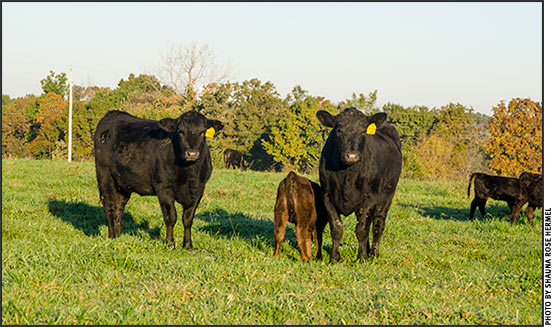
Should I Cull or Keep that Cow?
There are many options to consider when creating a cull list, but it is important to stick to that decision.
When making culling decisions, it is important to have a plan to make the best decisions for your operation. The plan should include pregnancy testing and closely evaluating every cow, and having a plan for marketing the culls.
Bruce Viney, risk management specialist for Alberta Agriculture and Forestry, says there are no right answers that fit everyone, and the best decisions vary from year to year because cattle prices are unpredictable.
“Though prices tend to go up in summer and drop in the fall, they don’t always. Knowing your cost of production is crucial. Even though you might have lots of feed, this doesn’t mean you should put it into old cows. You might be better off to keep it for calves or another use,” he says.
“If you have older, thin cows that will bring the lower end of the price range, you might not want to spend much on feed to try to get them heavier. Sometimes you are better off to just sell them,” he continues. “On the other hand, if the open cows are young heifers that lost calves, they are worth more and you can afford to spend a little more to get them ready to sell and put together a load. Sometimes there’s a good market for heiferettes if they have the potential to grade better.”
Everyone wants to hit the peak market, but that’s hard to do. There is a seasonal tendency for higher prices in spring and summer, but it costs feed and overhead to hold cull cows over winter and get them into that market. If you have cheap feed and facilities to do it, you can make money, but there is always some risk in holding cows.
There are many other reasons to cull cows other than their pregnancy status. You don’t want to regret not sending a cow to market that you should have sold.
“If they have bad feet, bad udders, bad attitudes, we got rid of them,” says Viney. “We are lucky because we have markets nearby and we don’t need a full load to justify transportation cost. If a cow gave us a problem, we got rid of her,” says Viney.
However, sometimes it is easy to soften on culling criteria, even when it’s not best for the operation.
“Every producer has a notebook or recordkeeping system. When a cow calves, you can note that she has a bad udder or was wild/aggressive and needs to be on the cull list. Come fall, however, when she has a big calf and she’s quieted down or her udder doesn’t look so bad — and she’s bred again — it is easy to lose our resolve about selling her. It’s easy to decide to keep her another year, rather than acting on our earlier decision.”
You are tired from working long hours during spring calving, and you have a nice cull list. Then you soften in the fall.
“You don’t stop to consider the extra costs of production involved with those animals — the fact that this wild cow might break out and you’ll have to fix fence, or she might hurt someone, or you might have more labor involved if she has a bad udder,” Viney says.
“Keeping a bunch of cull cows longer to put more weight on them is not just the feed you put into them. The feed has a value. You could always sell it or use it for something else,” he says.
All factors need to be weighed when making these decisions.

Editor’s Note: Heather Smith Thomas is a cattlewoman and freelance writer from Salmon, Idaho.






